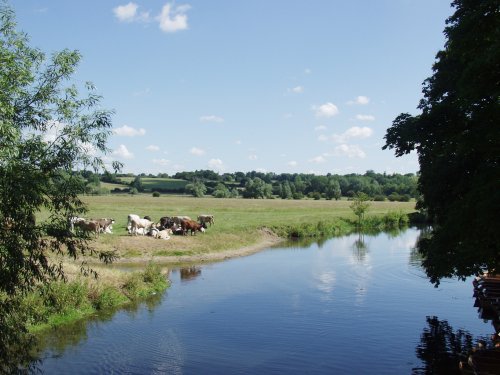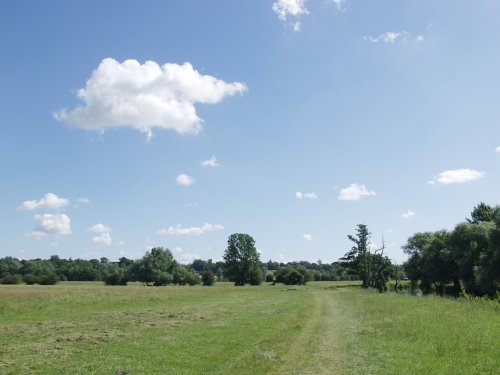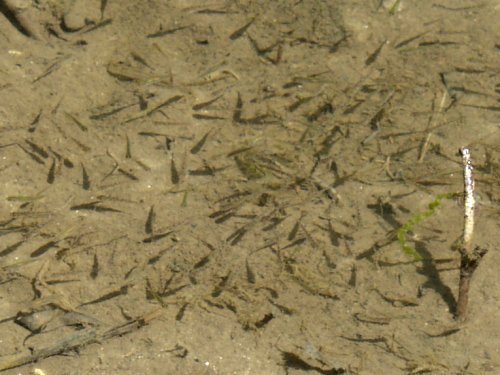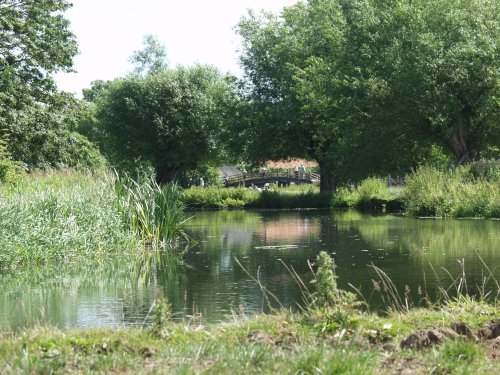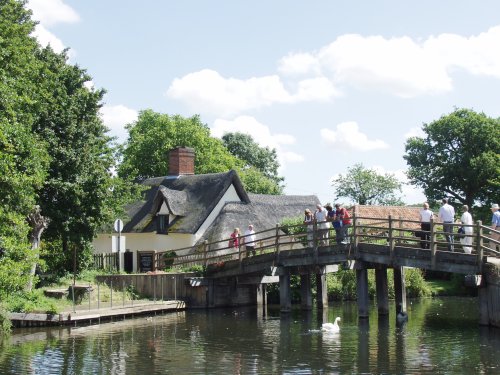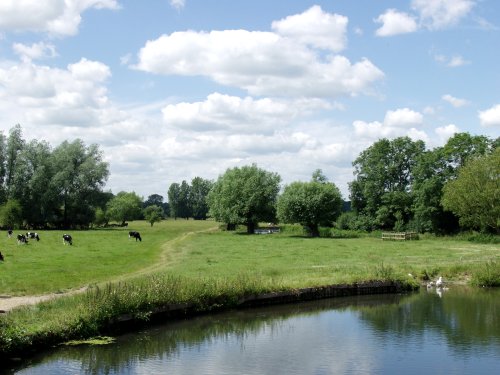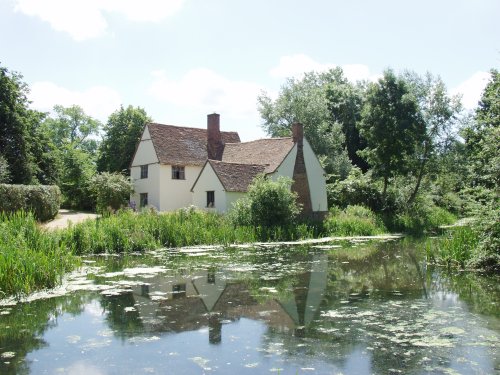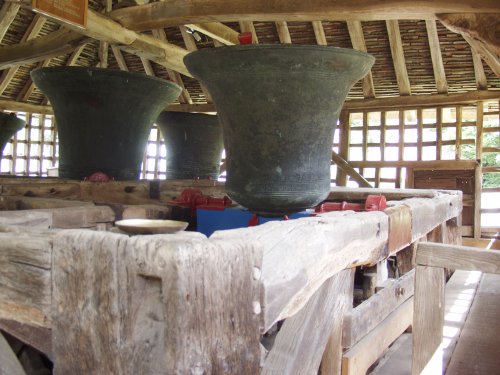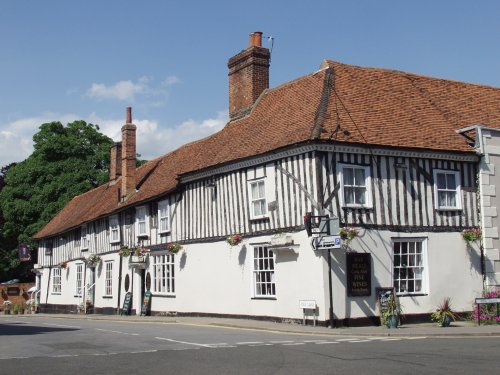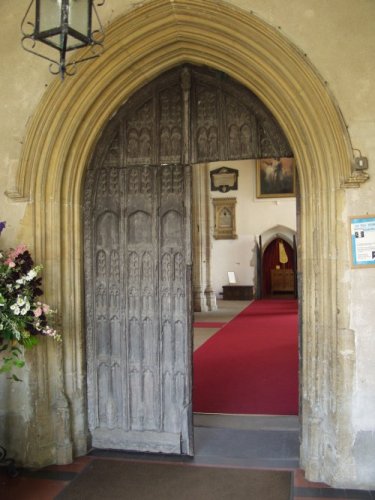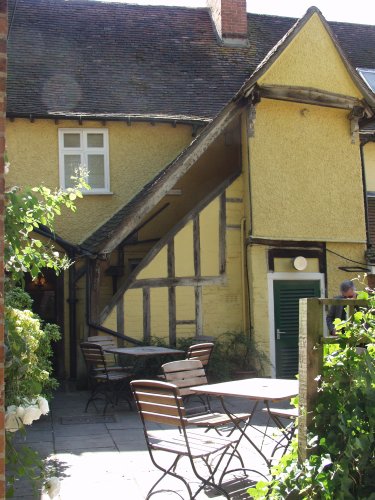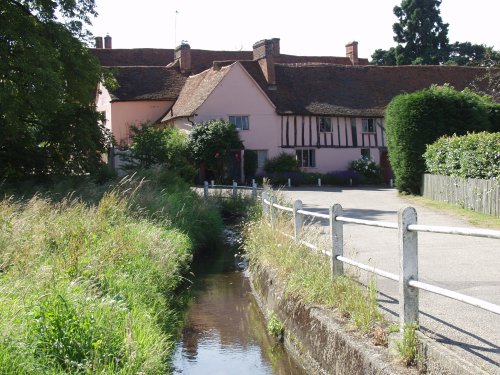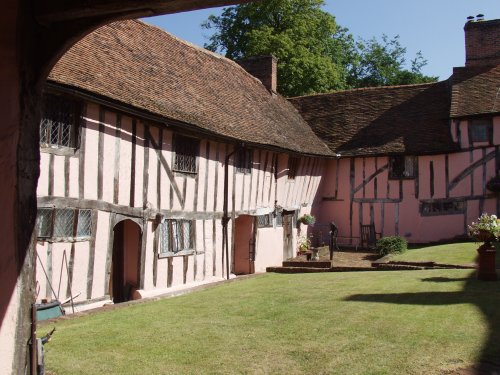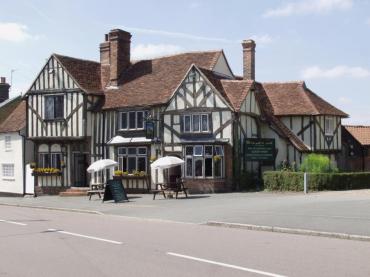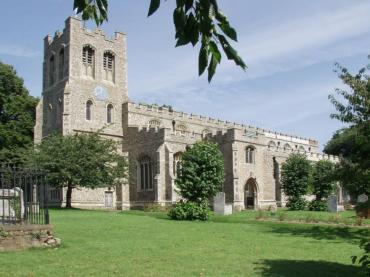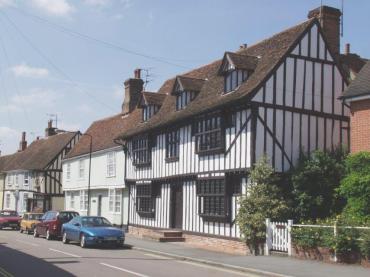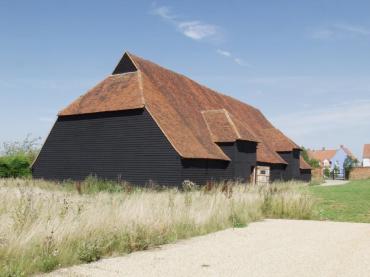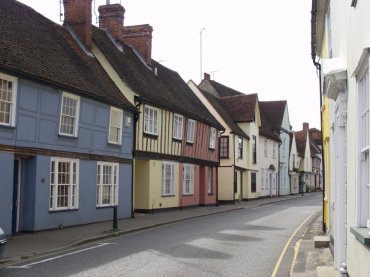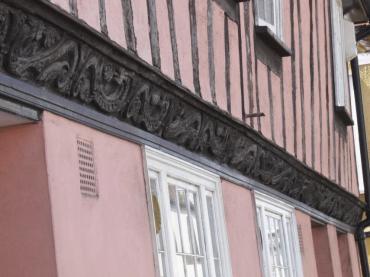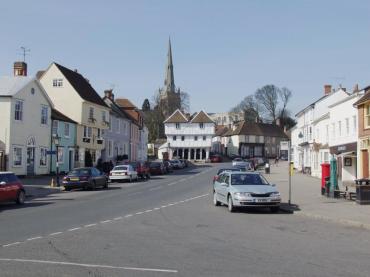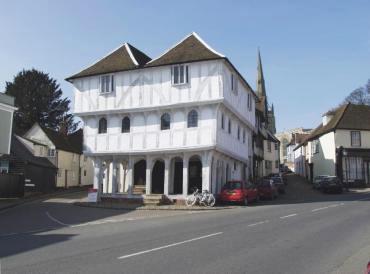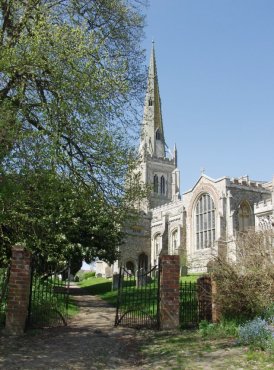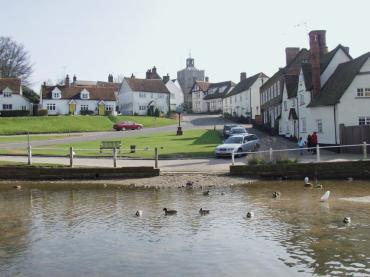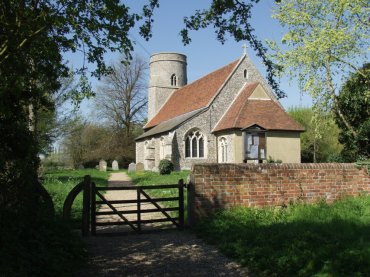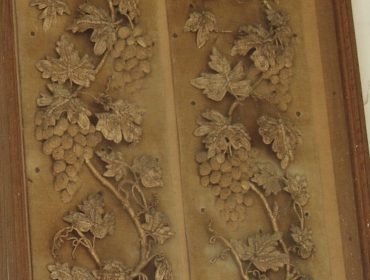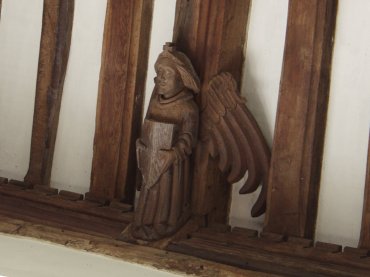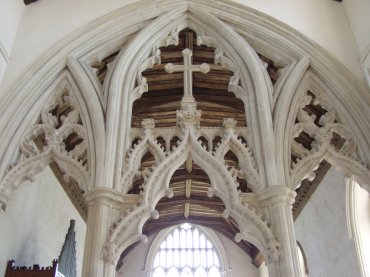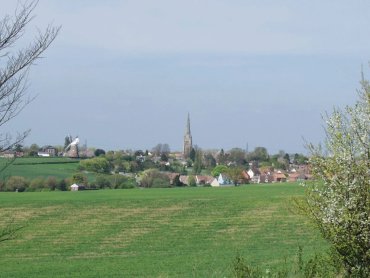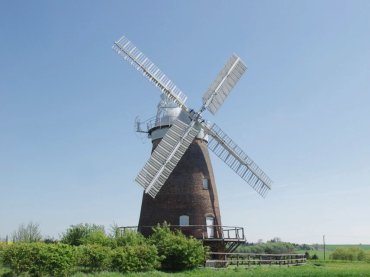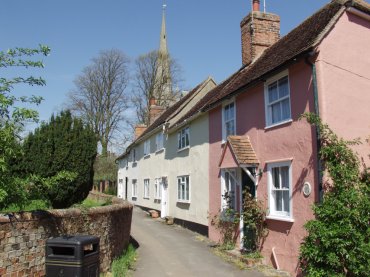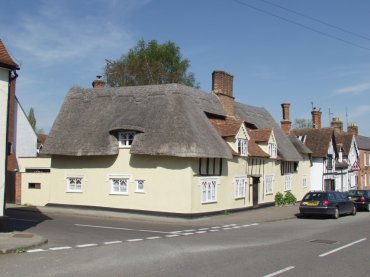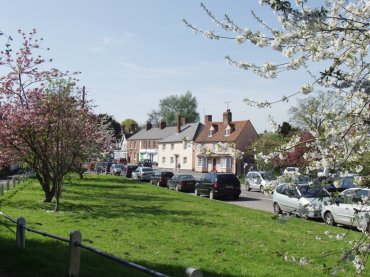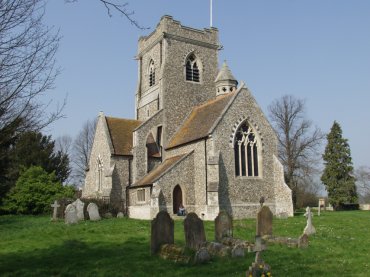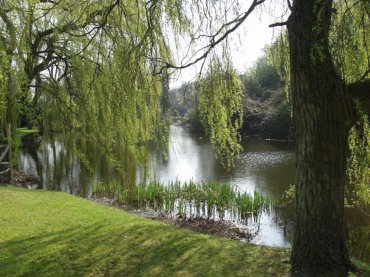Yes and No
Back from our recent trip the answer to the question in the title of the previous posting is ‘Yes and No’.
We were lucky in that it was sunny but unlucky because it was uncomfortably hot and humid. We were lucky to visit Houghton, Hemingford Grey and Hemingford Abbots but St. Ives was a bit of a disappointment but I’ll start at the beginning.
Wednesday 1st July
We drove to Houghton which lies between Huntingdon and St. Ives in Huntingdonshire and we were there by 11:30 in the morning. We parked the car in the Three Horseshoes Inn’s car park and announced our arrival although we didn’t go up to our room.

We wanted to look round Houghton village before we set off on our planned walk because it’s a pretty village with attractive old buildings and chocolate box cottages. We rather liked this display of Hollyhocks which is on the other side of the village square from the Three Horseshoes. The village square is called “The Green” and although it may have been green at some time in the past it certainly isn’t now.

Opposite the Hollyhocks is what is known locally as the crooked house. You can just see some of the Hollyhocks on the extreme left of the picture peeping out from behind a house.

We wandered down Mill Lane (We were now starting the route of our planned walk) passing this chocolate box cottage on the way. It just had to have roses along the front didn’t it?

At the end of Mill Lane there is, wait for it, a mill. Owned by the National Trust it is still in working order and in a lovely setting. The water wheel must be one of the biggest, if not the biggest, we have ever seen. We have mentioned this mill briefly before on our way up to Stamford.

From the mill we followed the path across the River Great Ouse to Hemingford Abbots. Hemingford Abbots, like its neighbour Hemingford Grey, is a curious village. Very attractive and well kept with a number of old buildings but the old buildings are easily outnumbered by large, relatively modern and very expensive looking houses. Although we enjoyed looking at the designs of the modern houses we were more interested in the older style buildings.

That phrase ‘Chocolate Box’ springs to mind again – I don’t know why. We soon reached the centre of the village and this view of their pub, the Axe and Compass, with the church in the background.

As Hemingford Abbots and Hemingford Grey are virtually touching it wasn’t long before we were on the outskirts of Hemingford Grey.

It didn’t take long to reach the centre of the village which is where this next picture was taken and the suspicious looking person lurking in the shadows is, of course, Amanda. On a day like this lurking in the shadows is the best place to be – it was sweltering!

Both the Hemingfords are close to the River Great Ouse and our path took us alongside the river on our way to Hemingford Grey Meadow with St. Ives beyond.

We weren’t really looking forward to the next section which would involve crossing the rather large Hemingford Grey Meadow because we thought that there may be no shade in which to to shelter for some time. One of the churches in St. Ives can be seen on the other side of the meadow together with a few other buildings.

Luckily there was a small water channel, running down one side of the meadow, which was lined with shrubs and trees and we were able to spend short periods going through shade.
St. Ives is an old town but as we approached all we could see on the outskirts were modern buildings – not an old building in sight. We entered the town near the old bridge and having soon passed the modern additions we arrived at the waterside.

This picture was taken from the old bridge which is unusual in that it has a small chapel in the centre which you can see here on the right as we cross the bridge into the main part of the town.

There was a tea shop on the other side with a river terrace where we stopped for a much needed drink and from where I took this photograph of the 15th century bridge.

The area around the bridge and river is very nice but the rest of the town has nothing for the tourist. It’s not an unpleasant place but just little else of interest to see. We weren’t particularly pleased after walking all that way on a very hot and humid day especially as we now had to walk back but that’s the luck of the draw.
We arrived back at the inn in time for a short rest, a shower and then dinner. According to my pedometer we walked exactly 11 miles today.
Thursday 2nd July
After our St. Ives experience we decided to drive through Huntingdon first to assess the place and didn’t really see much there of interest either so drove on to Godmanchester. That didn’t hold our interest either so it was on to Plan B.
We pass close to Cambridge on our route to and from Houghton so we had thought that if we had time, which we now have, we might vist Anglesey Abbey. Now you may think that that would be a gargantuan detour but Anglesey Abbey is not on Anglesey in North Wales it is just a few miles north of Cambridge and is owned by the National Trust.
So it was that we arrived at Anglesey Abbey and gardens just as it was about to open at 10:30 AM. Walking through the gardens we had a bit of a surprise when we came upon this grove of trees.

Each one of those tree trunks is silvery white and the bark is quite hard and shiny. They are a form of Silver Birch which come from the Chinese side of the Himalaya. They gave a really ethereal atmosphere like something out of Alice in Wonderland.
A little further on we arrived at Lode Mill which is a rather cute little watermill and is now part of Anglesey Abbey grounds. We were going to have a look round the inside but the mill wasn’t open today because of a shortage of volunteers. The mill site is described in the Domesday Book although the building will have been replaced, possibly a number of times, since then.

From the mill we found our way to the Herbaceous Garden. Now that’s what I call a herbaceous border and it goes all the way round this large area. Keep that lot clear of weeds if you can.


After leaving the Herbaceous Garden we followed a not so obvious path and eventually stumbled upon the house. Even with a plan of the garden showing the paths it’s easy to get slightly lost in this place. Not a bad country cottage is it? Although the name of the property is Anglesey Abbey it is actually a country house.

Walking past the house, through the Rose Garden, we managed to find the Formal Garden where Amanda took this picture of me trying to run off with one of the stone vases. This may be a formal garden but dress is informal.

The gardens are very large covering around 114 acres most of which is parkland like this.

There is a lot that we didn’t see but Anglesey Abbey is only about an hours drive from us so we will probably return at different times of the year to see the changes.
That was the end of our current trip.
- Like the curate’s egg it was good in parts.
- Better luck next time
- Can’t win ’em all.
You know the sort of thing. ![]()
